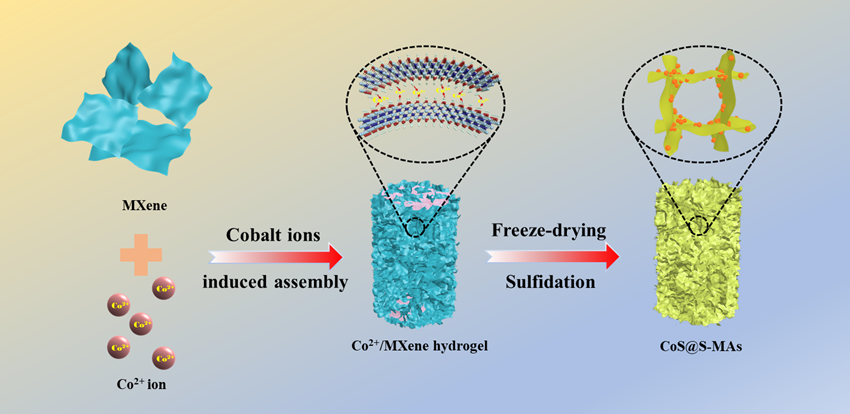Researcher Develop Novel Strategy to Fabricate 3D-MXene-based Electrocatalyst for Nitrogen Reduction to Ammonia
Researchers from the Qingdao Institute of Bioenergy and Bioprocess Technology (QIBEBT) of the Chinese Academy of Sciences (CAS) proposed a novel strategy to fabricate 3DMXene-based electrocatalyst for highly efficient nitrogen reduction to ammonia.
This study was published in Small on Oct. 4.
Ammonia is considered the next generation hydrogen energy carrier. Ammonia synthesis currently still relies on traditional Harbor-Bosch process. This process not only consumes around 2% global annual energy consumption, but also contributes over 1.6 % global annual CO2 emission.
Electrochemical nitrogen reduction reaction (eNRR) can be performed at ambient temperature and atmospheric pressure using water as the proton source, which is a promising strategy for nitrogen reduction to ammonia.
Two-dimensional (2D) transition metal carbides or nitrides (known as MXenes) was an excellent electrocatalyst for eNRR, due to the advantages of superb electrical conductivity, versatile surface functionality and tunable layered structure. However, MXenes have a strong tendency to self-restack and agglomerate owing to van der Waals interactions and hydrogen bonding, which hampers their practical applications.
In this study, the researchers adopted "One stone two birds" strategy.
Divalent ions (Co2+, Fe2+, Ni2+) firstly induced MXene aerogel, which was followed by thermal sulfidation. Divalent ions not only effectively bound layered MXene as a linker, but also could be converted to metal sulfide nanoparticles confined in a sulfur-doped MXene 3D aerogel (MSx@S-MAs) during sulfidation process.
The as-obtained MSx@S-MAs features outstanding properties with 3D interconnected channels, hierarchical pores and large specific surface area, thus leading to much higher exposure of the catalytically active sites, easier accessibility, and faster electron and charge transfer kinetics.
This study not only develops a highly efficient electrocatalyst toward eNRR, but also offers a new prospect for the rational design and construction of 3D porous MXene-based aerogel materials for diverse applications in energy storage and conversion, gas adsorption and separation, and catalysis.

Schematic illustration for the construction of CoS@S-MAs (Image by LI Qinglin)
(Text by LI Qinglin)
Contact:
CHENG Jing
Qingdao Institute of Bioenergy and Bioprocess Technology, Chinese Academy of Sciences
Tel: 86-532-80662647
E-mail: chengjing@qibebt.ac.cn